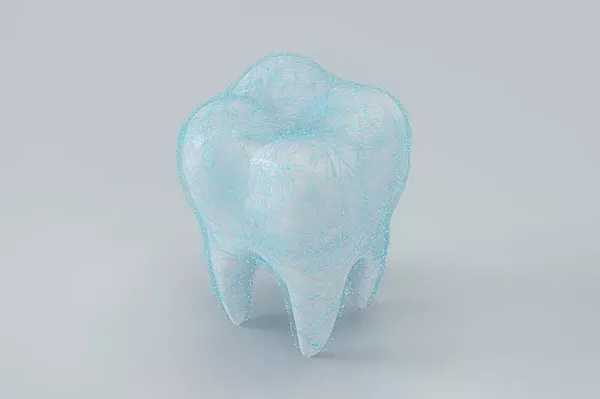A root canal procedure is a dental treatment aimed at saving a severely damaged or infected tooth. After a root canal, the tooth is sealed with a filling to prevent further infection. However, in some cases, the filling may become dislodged or fall out. This situation can be concerning, but it’s essential to know what steps to take if your root canal filling comes loose or falls out. In this article, we will discuss the possible reasons for this occurrence, the potential risks, and the appropriate actions to address it.
Understanding the Root Canal Filling
Before delving into what to do if your root canal filling falls out, let’s briefly review the root canal procedure and the role of the filling:
Root Canal Procedure: A root canal is a dental procedure performed to treat a tooth that has extensive decay, infection, or damage to its pulp (the innermost part of the tooth). During the procedure, the dentist removes the infected or damaged pulp, cleans the inside of the tooth, and seals it with a filling material.
Filling Material: The filling material used in a root canal is typically a rubbery substance called gutta-percha. This material is placed inside the cleaned and disinfected root canals to seal them off, preventing bacteria from re-entering the tooth.
Common Reasons for a Root Canal Filling to Fall Out
Several factors can contribute to the dislodging or falling out of a root canal filling:
Inadequate Sealing: If the sealing process during the root canal procedure is not done correctly, the filling material may not adhere properly to the tooth’s walls. This can lead to leakage and, eventually, the filling coming loose.
Tooth Fracture: A tooth that has undergone a root canal may become weakened due to extensive decay or structural damage. If the tooth fractures or sustains further damage, it can compromise the integrity of the root canal filling.
Crown or Restoration Issues: Teeth that have received root canal treatment often require a dental crown or restoration to strengthen and protect them. If the crown or restoration becomes loose or fails, it can affect the stability of the root canal filling.
Deterioration Over Time: Like any dental material, gutta-percha can degrade over time due to wear and tear. As it deteriorates, the filling may lose its effectiveness and come loose.
Secondary Infection: In some cases, a secondary infection or reinfection of the tooth can occur, leading to the failure of the root canal treatment and the displacement of the filling material.
What to Do If Your Root Canal Filling Falls Out
If you experience the dislodging or falling out of your root canal filling, it’s essential to take the following steps:
Stay Calm: While it can be unsettling, try to remain calm. A lost filling does not necessarily mean immediate discomfort or pain.
Protect the Area: Avoid chewing or putting pressure on the affected tooth to prevent further damage. You can do this by sticking to softer foods and avoiding anything too hot or cold.
Save the Filling: If you can retrieve the lost filling material, gently rinse it with warm water and place it in a clean, moist environment. This step may be important if your dentist can reseal the tooth.
Contact Your Dentist: Reach out to your dentist as soon as possible to explain the situation and schedule an appointment. Be sure to mention any discomfort or pain you are experiencing.
Maintain Oral Hygiene: Continue to brush and floss your teeth regularly, being gentle around the affected area. Good oral hygiene can help prevent further complications.
Take Over-the-Counter Pain Relief: If you experience discomfort, you can take over-the-counter pain relievers according to the product’s instructions.
Avoid Home Remedies: While you may come across various DIY solutions for temporarily sealing a lost filling, it’s crucial to avoid attempting any home remedies. These can introduce bacteria and further complicate the situation.
What to Expect at the Dental Appointment
During your dental appointment to address the lost root canal filling, your dentist will:
Evaluate the Tooth: Your dentist will examine the tooth to assess its condition, including the extent of damage, the presence of any infection, and the status of the surrounding tissues.
X-rays: X-rays may be taken to get a clearer view of the tooth’s root canals and surrounding structures.
Discuss Treatment Options: Based on their evaluation, your dentist will discuss treatment options with you. This may include resealing the tooth with a new filling, performing a root canal retreatment, or considering other restorative solutions.
Temporary Measures: In some cases, your dentist may apply a temporary filling to protect the tooth until a permanent solution can be provided.
Address Any Infection: If there is evidence of infection, your dentist may prescribe antibiotics to resolve it before further treatment.
Conclusion
A lost or dislodged root canal filling should not be ignored, as it can lead to complications and discomfort. Promptly contacting your dentist is crucial to assess the situation, determine the cause of the issue, and provide appropriate treatment. Remember that your dentist will work with you to find the best solution to restore the tooth’s function and prevent further problems. Regular dental check-ups and open communication with your dental care provider are essential in maintaining the health of your teeth, especially those that have undergone root canal treatment.
Related Topics:































